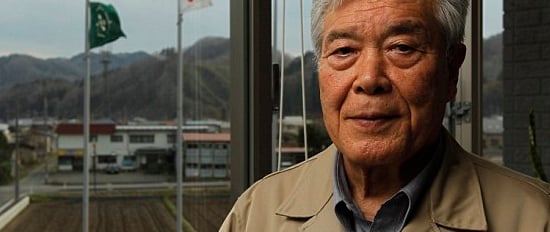Kotoku Wamura: The Mayor Who Saved a Town but Lost His Own Life
Kotoku Wamura, mayor of Otsuchi, spent his life warning his town of tsunamis. When disaster struck in 2011, he stayed behind to coordinate evacuations, using his last moments to plead with residents to flee. The tsunami killed nearly 2,000 in Otsuchi, including Wamura. This article explores his life, the haunting decisions leading to his death, and the legacy of a man whose foresight and sacrifice saved hundreds. It also investigates the failures of infrastructure and bureaucracy that contributed to the tragedy, leaving Japan to ask: could this hero’s death — and thousands more — have been prevented?
GRIM REALITYOUR DREADFUL WORLDHOPENEWS
7/9/20254 min read


Introduction to Kotoku Wamura
Kotoku Wamura emerged as a significant figure in Japanese politics during the early 20th century. Born in 1882 in the small town of Komatsu, Wamura's early life was marked by humble beginnings. He was the son of a farmer, which deeply influenced his understanding of the socioeconomic challenges faced by rural communities. From an early age, Wamura demonstrated a commitment to education, going on to study at a prestigious university. His academic achievements laid a strong foundation for his future endeavors in public service.
Wamura’s entry into politics was motivated by a genuine desire to improve the living conditions of his hometown and similar rural regions in Japan. He observed firsthand the struggles that farmers and laborers encountered, including poverty and an absence of adequate infrastructure. These experiences cultivated his passion for social reform and made him acutely aware of Japan's pressing need for urban development and effective governance in rural areas.
By the early 1920s, Wamura’s dedication to his community propelled him into local politics. He was elected as the mayor of a small town, quickly gaining a reputation for his unwavering commitment to public welfare and innovative policies. His tenure coincided with a period of rapid transformation in Japan, marked by industrialization and modernization efforts following the Meiji Restoration. Wamura leveraged this context to advocate for improvements in education, healthcare, and infrastructure, effectively transforming the town into a model community.
Wamura's approach combined pragmatic solutions with a deep-seated empathy for the needs of the local populace. His ability to forge strong connections with constituents played an instrumental role in his success as a public servant. As he navigated the complexities of political life, Wamura's unwavering resolve and vision for a better future established him as an influential leader in the burgeoning landscape of modern Japanese politics.
The Tsunami That Devoured a Nation
On March 11, 2011, Japan trembled. A magnitude 9.0 earthquake ripped through the Pacific Ocean, sending walls of water hurtling toward the coastline. Sirens wailed. Streets cracked open. And then the sea came for the land.
In the town of Otsuchi, located in Iwate Prefecture, residents had only minutes to escape. The ocean swallowed homes, roads, and families whole.
At the center of the chaos was Kotoku Wamura, Otsuchi’s 69-year-old mayor.
A man who spent his life protecting his people would spend his last moments fighting to save them.
The Voice of Warning
For decades, Wamura had been an unlikely prophet of doom.
As mayor in the 1970s and 1980s, he championed disaster preparedness. He remembered vividly how the 1933 Sanriku tsunami obliterated coastal villages. He saw the aftermath of the 1960 Chilean tsunami that reached Japan’s shores.
“Build higher,” he urged engineers when constructing seawalls. “Move to higher ground.”
He pushed for evacuation drills. He advocated for reinforced shelters. When townspeople balked at the cost of his plans, he insisted: “We are at the mercy of the sea. If we do not prepare, we will perish.”
Many ignored him. Some mocked him.
But when the 2011 tsunami came, his warnings became prophecy.
The Last Broadcast
As the ground convulsed and blackouts spread across Otsuchi, Wamura rushed to the town hall. The tsunami sirens were already blaring, but he knew not everyone would hear them.
He grabbed the municipal loudspeaker microphone and shouted into it:
"A tsunami is coming! Please, everyone, run to higher ground! Don’t wait — RUN!"
His voice echoed across the streets as he pleaded for his neighbors to flee. Witnesses later said they heard Wamura’s voice shaking, both from urgency and fear.
The last anyone saw of him, he was still in the town hall, trying to coordinate rescue efforts as the tsunami devoured the coastline.
The water struck with unimaginable force.
A Town in Ruins
When the sea retreated, Otsuchi was gone.
90% of the town had been flattened. Out of a population of 15,000, nearly 2,000 people were dead or missing. Cars were stacked like toys. Entire neighborhoods had been scraped off the map.
And Mayor Kotoku Wamura was nowhere to be found.
For weeks, search crews combed through wreckage. Bodies surfaced in harbors and rice fields. Eventually, Wamura’s body was discovered near the harbor, battered and unrecognizable. He had been swept away with his town hall as the wave surged over the seawalls.
The Legacy of Kotoku Wamura
Kotoku Wamura is remembered as the man who gave his life for his people.
In Otsuchi, survivors say his repeated warnings and evacuation drills saved countless lives. Many who reached high ground credited him for their survival.
But his death also became a symbol of Japan’s vulnerability — and a nation’s failure to heed the wisdom of its elders.
Theories and Questions
In the aftermath, a darker conversation began:
Why weren’t the seawalls higher? Critics claimed government officials had ignored Wamura’s decades-long push for stronger defenses, cutting costs in favor of convenience.
Was the evacuation too late? Some said the town should have moved critical infrastructure to higher ground years earlier, as Wamura suggested.
Could he have survived? Others asked why the mayor didn’t flee himself. Did he stay behind out of duty — or did the system trap him there?
For many, Wamura’s death wasn’t just tragic. It was preventable.
The Toll of Leadership
In Japanese culture, mayors and officials are seen as shepherds of their people. When disaster strikes, they are expected to guide, protect, and, if necessary, sacrifice.
Kotoku Wamura fulfilled that duty to the end.
His story is now taught in disaster preparedness courses across Japan. His name is inscribed on memorials alongside the thousands lost to the 2011 tsunami.
Sources
Japan Times: Kotoku Wamura’s Legacy
NHK Documentary on Otsuchi
Tsunami Memorial Archives
Despair
A dark exploration of societal decay and despair.
Void
+1234567890
© 2025. All rights reserved.
Any comments, business inquiries, ideas, or stories, let us know
